Year 1457–64 Dimensions 236 cm (93 in) Created 1455–1460 | Media Bronze | |
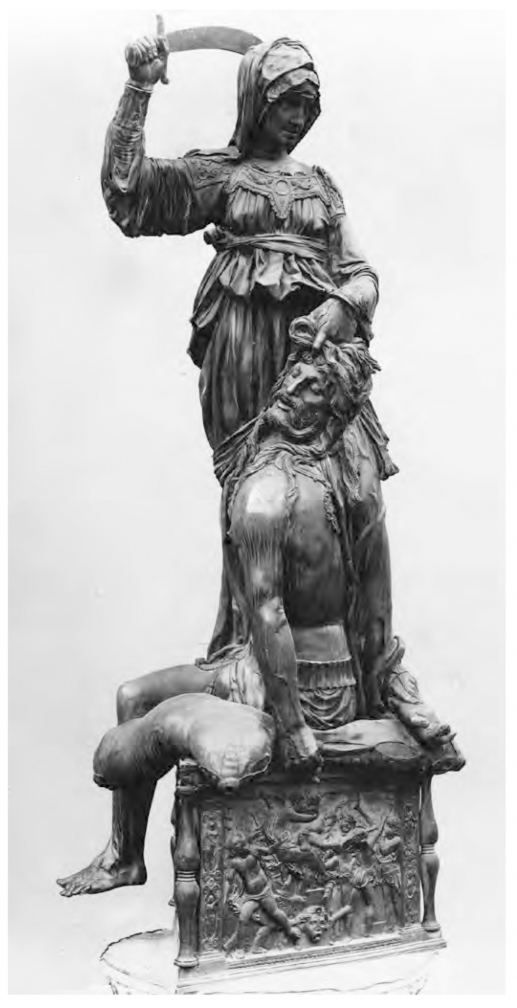 | ||
Similar Donatello artwork, Bronze, Renaissance artwork | ||
Michelangelo s david and donatello s judith and holofernes
The bronze sculpture Judith and Holofernes (1457–64), created by Donatello at the end of his career, can be seen in the Hall of Lilies (Sala dei Gigli), in the Palazzo Vecchio, Florence, Italy. A copy stands in one of the sculpture's original positions on the Piazza della Signoria, in front of the Palazzo Vecchio.
Contents
- Michelangelo s david and donatello s judith and holofernes
- The judith and holofernes of donatello
- Location History
- Symbolism of Judith
- Statue Details
- After Completion
- References
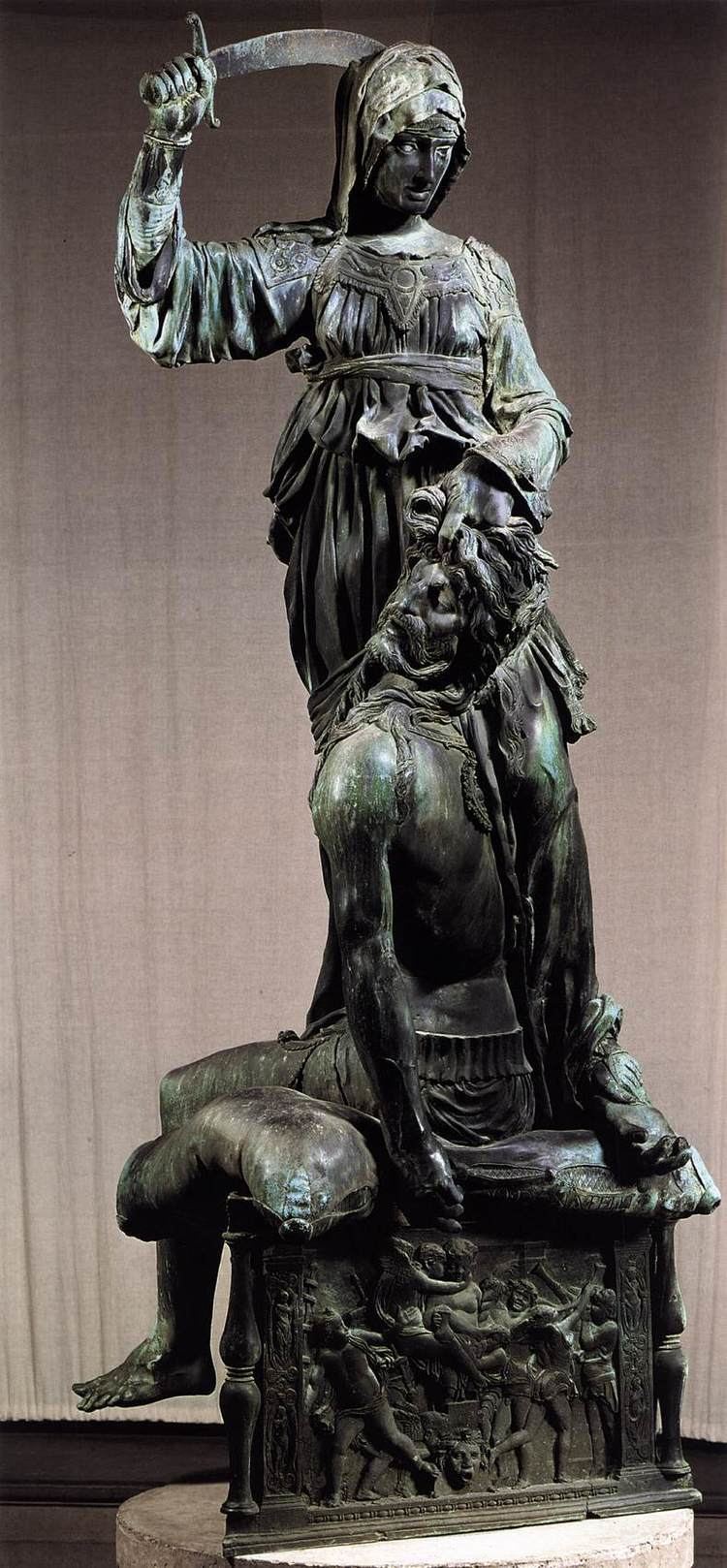
It depicts the assassination of the Assyrian general Holofernes by Judith and is remarkable for being one of the first Renaissance sculptures to be conceived in the round, with its four distinct faces. Judith Beheading Holofernes, depicting the climax of the story in the biblical Book of Judith was a common subject in art, and part of the Power of Women topos.
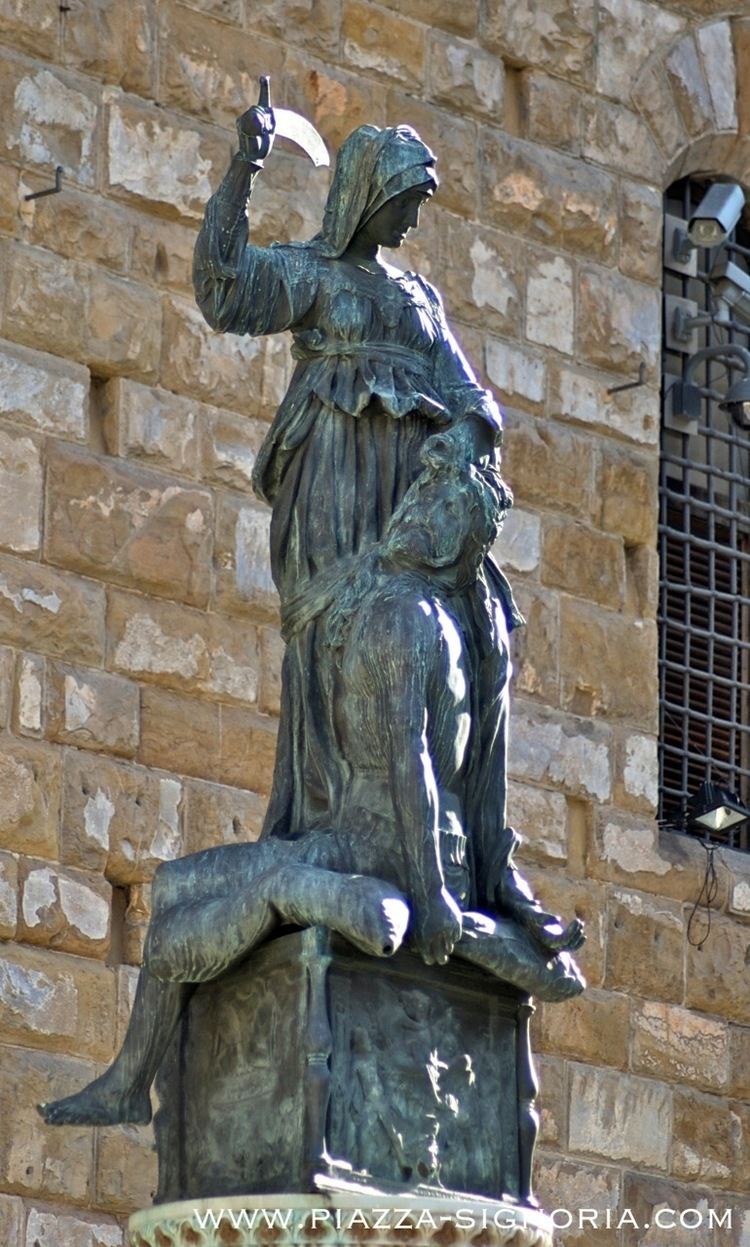
The judith and holofernes of donatello
Location History

The statue was commissioned by Cosimo de' Medici as a decoration for the fountain in the garden of the Palazzo Medici-Riccardi. This statue, along with Donatello's David, were positioned together in front of the palace around 1457, when Cosimo de Medici's extended family decided to move into it. Although the exact place where these two were displayed is unknown, both of these statues became a symbol for the power Florence possessed. To facilitate the gilding the bronze was cast in 11 parts. The base of the sculpture resembles a cushion, a naturalistic device first used by Donatello for his St. Mark in the Orsanmichele. Intended to function as a fountain, this statue sits on a triangular pedestal with holes for water to flow through.
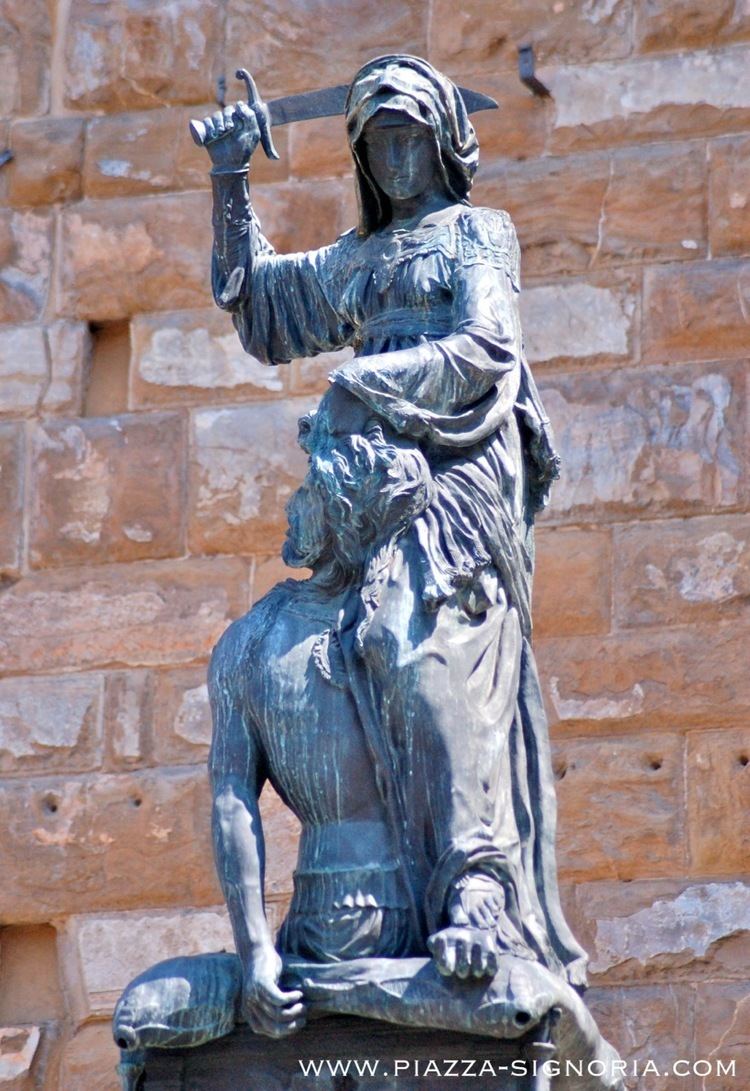
Both Judith and David are underdogs from Old Testament stories, and are also seen placed in close proximity in the fresco of Santa Maria Antiqua as well as on Lorenzo Ghiberti's East Baptistry Doors.
Symbolism of Judith
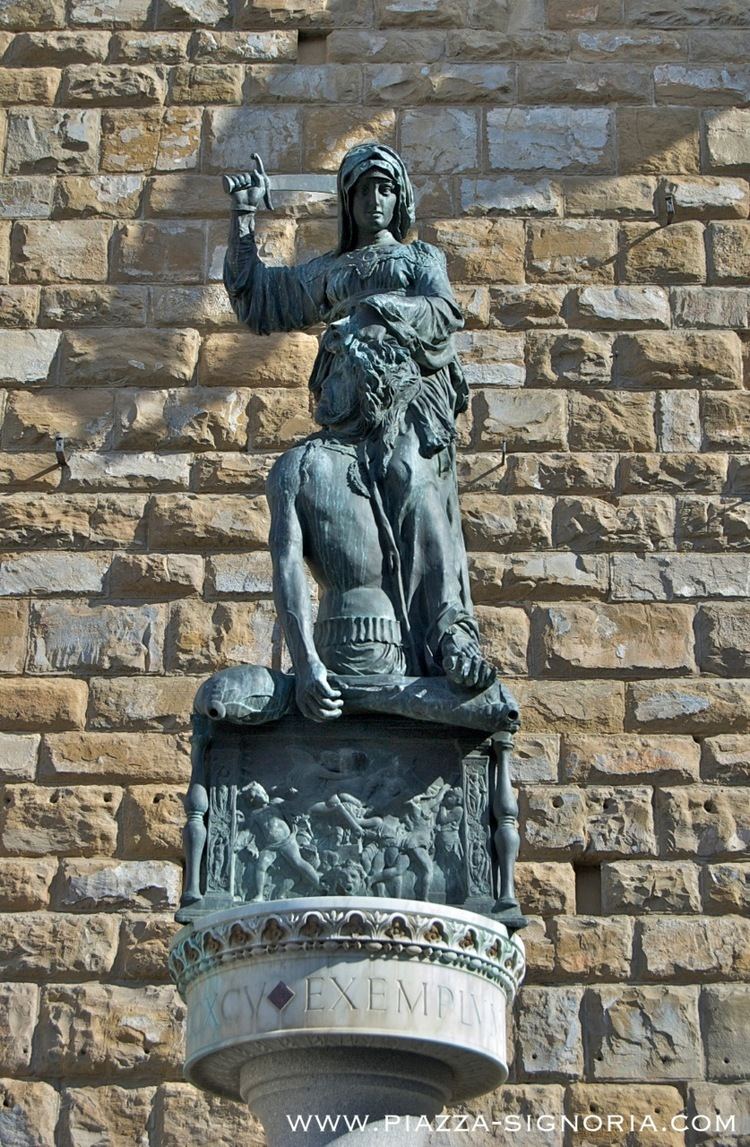
Judith is considered the symbol of liberty, virtue and victory of the weak over the strong in a just cause. She stands powerfully with a raised sword, holding the head of Holofernes by his hair. The statue was originally gilded; some gilding remains on the sword.
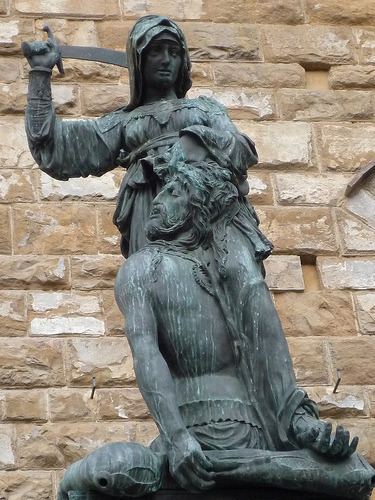
Christian symbolism of Judith reveals her actions over Holofernes to be a victory of virtue, particularly concerning self-control, chastity and humility, as opposed to promiscuity and pride. Her story in the Power of Women topos depicts the weak overcoming the assumed victor in an effort to protect her home. This is symbolic of the city of Florence, who fought to protect their Republic of Florence from foreign powers and to the Medici specifically upholding their pride in the city.
Statue Details
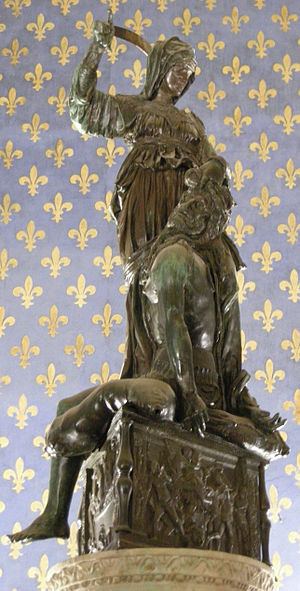
The anticipated slashing of the general's neck and overall notion of beheading is emphasized visually in the statue through Judith's intent gaze and strongly cocked arm wielding her blade ready to strike. In addition, carved into Holofernes' back, is a medallion structured to appear hanging from his neck has been historically known as a symbol of pride. Many scholars believe that in this instance the necklace is direct symbolism of pride evidenced by Psalms 73:6, which states, "the wicked wear pride like a necklace and violence wraps them round." It is also argued that the statue is meant to be viewed from the side rather than straight on. By viewing from an angle, the emphasis is on Holofernes' neck, flanked by both of Judith's legs underneath her garments, and is the center of attention as Judith pulls her arm back to strike. This would render the inscription "Behold the neck of pride served by the hand of humility" the most accurately depicted.
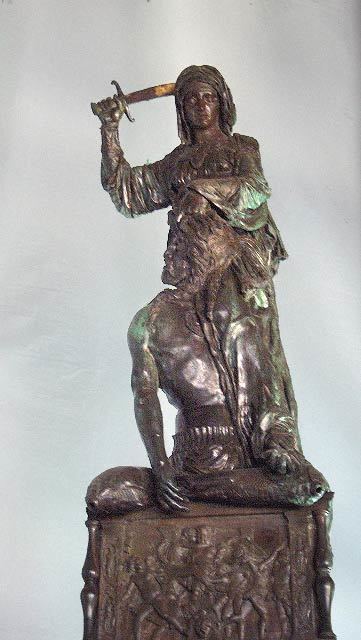
It is believed that an inscription on the granite pedestal originally read, "Kingdoms fall through luxury [sin], cities rise through virtues. Behold the neck of pride severed by the hand of humility." This dramatic and detailed statue is thus a metaphor of the Medici rule, as the defenders of Florentine liberty, akin to Judith, slayer of the tyrant Holofernes and defender of the people. This view is supported by accounts that mention a second inscription on the pedestal which read, "The salvation of the state. Piero de' Medici son of Cosimo dedicated this statue of a woman both to liberty and to fortitude, whereby the citizens with unvanquished and constant heart might return to the republic." Inscribed on the cushion are the words OPVS . DONATELLI . FLOR (the work of the Florentine, Donatello), this being the only surviving signed work by the artist.
After Completion
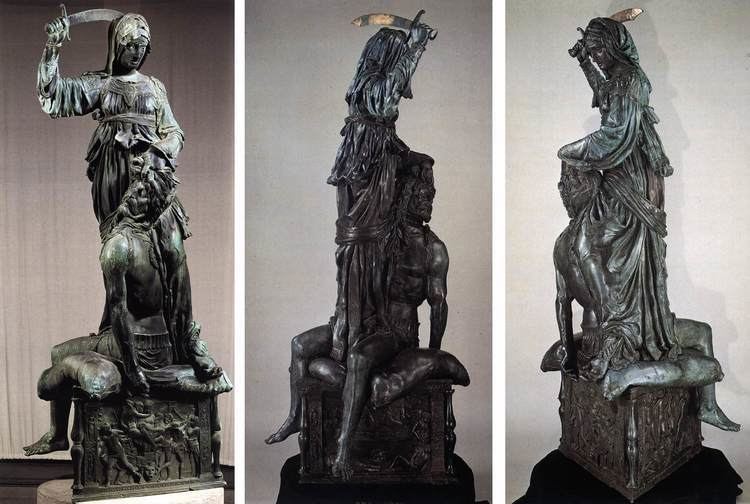
In 1495, the sculpture was placed on the Piazza della Signoria, at the side of main door the Palazzo Vecchio, in memory of the expulsion of Piero di Lorenzo de' Medici from Florence and the introduction of the Florentine republic under Girolamo Savonarola. This time, this statue symbolized the expulsion of the tyrannical Medici. The statue was later moved to the courtyard inside the Palazzo Vecchio, and still later into the Loggia dei Lanzi. In 1919, it was then placed on the left side of the Palazzo Vecchio. It was replaced by a bronze copy in 1988 and the original, after restoration, was given a final place in the Sala dei Gigli inside the Palazzo Vecchio.
